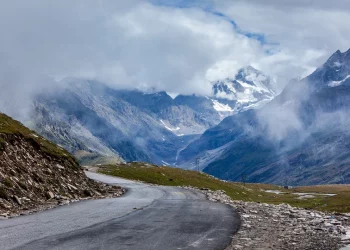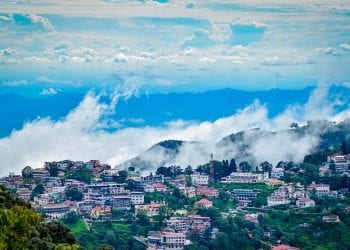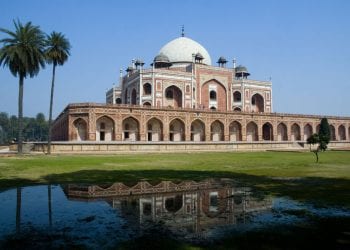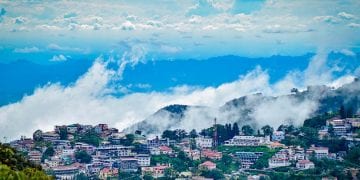7 Mystical Temples to Visit in Gaya
One of the greatest tourist attractions in Bihar is the beautiful pilgrimage city of Gaya. Gaya is mostly known as the birthplace of Buddhism as Gautama Buddha attained nirvana in this holy site. Gaya has temples of great beauty and heritage and makes it one of the most desired spiritual destinations in India.
The beautiful city is surrounded on three sides by hills and the meandering Phalgu River. If you are planning to make a trip to witness some spectacular temples while taking a walk through the history and the presence of Buddhism, in all peace and relaxation, then Gaya is your place.
Top 7 Temples To Visit In Gaya, Bihar
- The Mahabodhi Temple
- The Great Buddha Statue
- Lord Yama Temple, Pretshila Hill
- Dungeshwari Cave Temples
- Mangla Gauri Temple
- Chinese Temple
- Vishnupad Temple
1. The Mahabodhi Temple
One of the most important religious sites in Gaya is the Mahabodhi Temple also popularly known as the Great Awakening Temple; as legends say this is the very place where Lord Buddha attained enlightenment. It is situated in Bodhgaya in the state of Bihar and because of its religious and historical significance has been declared as a UNESCO World Heritage Site. The temple is stretched over a humungous area of 5 hectares and is about 180-feet in height. Hotels in Gaya Bihar need to be booked beforehand to make things easier for everybody.
The greatest attraction of the Mahabodhi Temple is no doubt the famous Bodhi tree, beneath whose shade Lord Buddha used to meditate, quietly stands on the left side of the temple. Even today, you can witness the prostrations and uncountable prayers performed before the Bodhi tree by monks and people alike. As it is believed that doing so can curb evil and purify your sins. It is not uncommon for some monks to make about one lakh prostrations in front of the tree.
This temple also holds tremendous historical importance for it was initially built by Emperor Ashoka after he took upon the religion of Buddhism to pursue the path of inner peace and solace instead of attaining victory at wars.
It is believed that the Great Emperor, during his visit to Gaya in 260 BC had raised a very small temple beside the Bodhi tree. However, inscriptions dating from the 1st and 2nd centuries suggest that the temple made by King Ashoka was destroyed and was replaced by a new temple. However, the architecture of the overall temple bespeaks the values and principles preached by Buddhism- mainly ahimsa and its natural derivative, peace. The temple remains open on all days of the week from morning 5:00 am to 12:00 pm, and from 4:00 pm till 9:00 pm. Hotels in Gaya Bihar need to be booked beforehand to keep last-minute issues at bay.
2. The Great Buddha Statue, Bodh Gaya
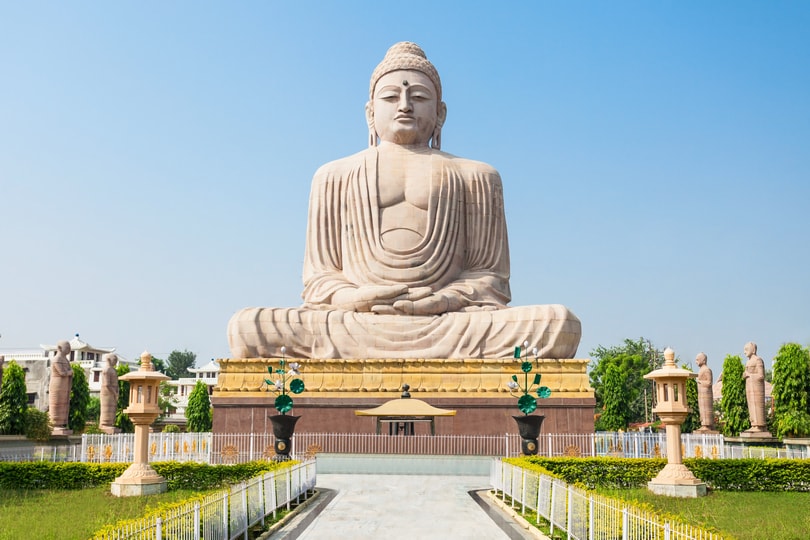
One of the most famous religious sites in Bodh Gaya, Bihar, is the massive statue of the great Gautama Buddha. The magnificent figure is about 25 meters high, resembling Lord Buddha in his meditation pose known as the mudra on top of a blooming lotus, carved from red granite and sandstone. This statue is believed to be the tallest one and also the first Buddha installed in the country. The locals often refer to the figure as the 80-feet statue. Hotels near Gaya Railway Station are also available for bookings.
The construction of the towering Buddha took 7 years to complete, by a Daijokyo who involved more than 12,000 masons for the creation of this spectacular sculpture of Lord Buddha.
The statue was consecrated on November 18, 1989, by the fourteenth Dalai Lama. The statue is located very close to the Mahabodhi Temple, and can be freely visited from morning 7:00 am to 12:00 pm, and again from 2:00 pm till 6:00 pm. It was solely made for the devotees to preach Buddhism and spread the teachings provided by Gautama Buddha. Hotels near Gaya Railway Station are also available for tourists to book.
3. Yama Temple in Pretshila Hill
Pretshila Hill, meaning the Hill of Ghosts is situated at a distance of eight kilometres of Gaya. It is one of the most sacred sites in Gaya for the Hindus where they come down to offer pind-daan, the ritual performed for the peace of a deceased’s soul. Situated at the top of the hill is the temple dedicated to the prayer of Lord Yama, the God of Death as per the mythology of the Hindus.
This temple dates back years ago, but nobody can provide an exact time frame as to when this religious site was constructed. It is believed to have been constructed by the Queen of Indore, Rani Ahilyabai Holkar.
However, the temple has since then undergone multiple renovations. Another attraction of this temple is the Ramkund Tank that stands very close to the temple. The locals believe that Lord Rama had bathed at that tank once, and ever since then, it has become a beacon of holiness. Hindus believe a bath in the tank has the power to dissolve the sins done by a person. Hotels near Gaya Railway Station are booked by tourists visiting the area.
4. Dungeshwari Cave Temples
The ancient Dungeshwari Cave Temples are situated in the northeast of Gaya at a distance of 12 kilometers. These cave temples are also popularly known as the Mahakala Cave Temples.
It is a religious site held with high reverence by people as they believe that Lord Gautama Buddha had meditated in these caves, long before he went to Bodh Gaya. The caves are home to intricate and spectacular Buddhist shrines, referred to as the Sujata Sthan by the locals. A famous story behind these revered caves is that – when Lord Buddha pursued the path of self-demolition and did not take food or water, he was worn out completely, and later a lady from a village, called Sujata, had offered Him water and food. After which, it dawned upon Lord Buddha that enlightenment cannot be attained by self-abasement and he proceeded ahead on his journey to reach Bodh Gaya, the final destination in his quest.
A major attraction of the cave temples is a marvellous six feet high statue of Lord Buddha made of gold. Your spiritual journey in Gaya will be incomplete if you do not visit the beautiful shrines and the caves.
5. Mangla Gauri Temple
Mangla Gauri Temple is a temple of high importance for the Hindus, as it has been mentioned in the most sacred religious scriptures such as the Vayu Purana, Padma Purana, and Agni Purana as well as in many other tantric scriptures as well. Mangla Gauri Temple forms one of the 18 Maha Shakti-peeth’s in the country and stands proudly since the 15-century. Hotels near Gaya Railway Station are also booked apart from the ones near the temple.
The temple shrine is dedicated to the worship of Sati, the wife of Shiva, the Goddesses of the Vaishnavites residing in Gaya. One of the greatest attractions of this temple is the UPA-Shaktipeeth, which is popularly believed to be housing a part of the goddess that fell from the heavens. The goddess is here worshipped in the breast-form, which symbolizes the nourishment and love of a mother.
The temple is situated atop the Mangalagauri Hill and is believed to be a sacred spot granting the wishes of her devotees. One has to climb some stairs to reach the temple. Inside the temple, you will be able to see some beautiful ancient sculptures, and two shrines of Shiva with the images of Goddess Durga, and her incarnations Mahisasura Mardini and Dakshina Kali. The temple complex also houses the temples of Goddess Kali, Lord Hanuman, and Lord Ganesha.
6. Chinese Temple
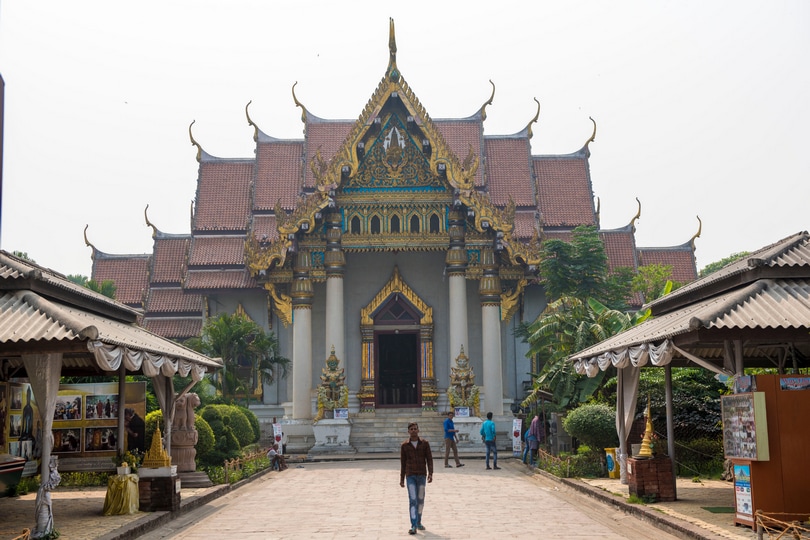
The Chinese Temple in Gaya stands nearby the Mahabodhi Temple and is a spectacular Buddhist temple built by Chinese-Buddhist monks. The architecture, therefore, is an amalgamation of the beautiful Indian and Chinese designs, especially the temple exterior, which resembles a Chinese monastery. Hotels in Gaya Bihar are booked by tourists visiting the area.
The Buddha statue inside the Chinese Temple is more than 200 years old and is believed to have been made and imported from China. The temple has three marvellous golden statues of Lord Buddha. Another attraction to the temple is the rich and detailed travelogues drawn by Chinese religious scholars who travelled to India for the pursuit of spirituality and wisdom.
7. Vishnupad Temple
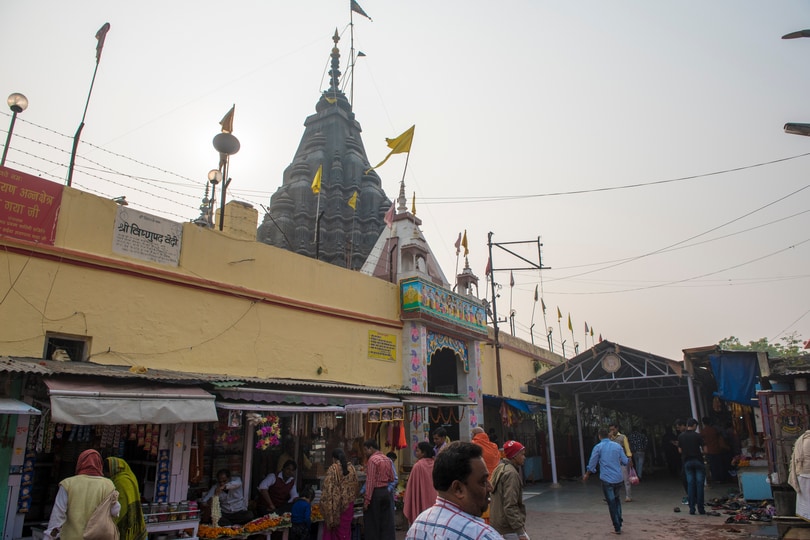
Vishnupad Temple is one of the most significant sacred temples in Gaya dedicated to the worship of Lord Vishnu. The temple’s architecture is influenced by the Shikara style although it underwent reconstruction and renovation by the Rani Ahilya Bai in the year 1787.
Several travellers and locals flock to the temple to worship the footprints present inside this temple. Lord Vishnu’s footprint is about 40 centimeters in length and encircled by silver plates, as many of the Hindu religious scriptures have described it. Hotels near Gaya Railway Station are booked by tourists quite frequently.
The temple stands on the banks of River Falgu and is a large complex dedicated to several gods and goddesses. The temple houses shrines of deities like Lord Narasimha and Lord Shiva.
Visiting the lanes of the city and exploring its ancient temples and rich culture, Gaya is a spiritual journey in itself. If you are seeking a peaceful and spiritual destination on your next trip, do not wait further and head to Gaya.
Recent Posts
Top Picks

- OYO
 15 April, 2024
15 April, 2024 - Cultural Tour

- OYO
 15 April, 2024
15 April, 2024 - Cultural Tour

- OYO
 15 April, 2024
15 April, 2024 - Cultural Tour

- OYO
 15 April, 2024
15 April, 2024 - Cultural Tour

- OYO
 15 April, 2024
15 April, 2024 - Cultural Tour

Please rotate your device
Please go back to portrait mode for the best experience




 April 15, 2024
April 15, 2024 